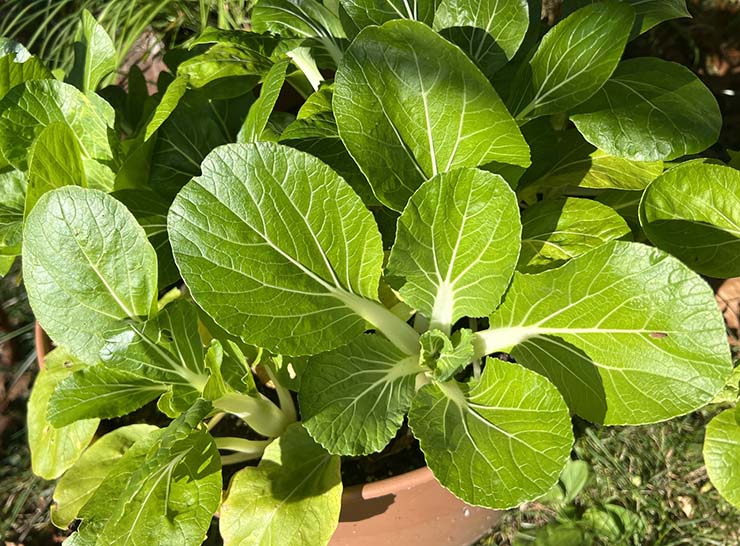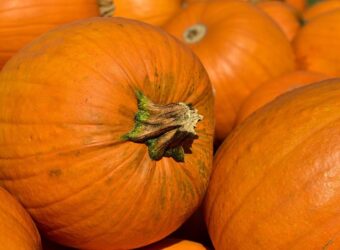Bok choy is a popular type of Chinese cabbage. It is a member of the Brassica family, along with cabbage, broccoli, and others.
Why Does Bok Choy Need Companion Plants?
The idea of companion plants is that certain plants help or harm other plants. Helpful ones should be planted together, while harmful ones should be separated. Here are the ways companion plants help Bok Choy.
Repel Insects
Aromatic plants like borage, alliums, nasturtiums, rosemary, sage, peppermint, and thyme repel many insects like bok choy, such as cabbage worms, flea beetles, and aphids. The plants’ strong smell confuses insects, and they cannot detect the bok choy.
Bring Pest Predators
Borage, carrots, celery, and chamomile attract insect predators such as hoverflies, lacewings, and parasitic wasps. These predators and their larvae eat the insects that are living on the bok choy and protect the bok choy from getting eaten.
Increase Nutrients and Flavor
Beans and peas fix nitrogen in the soil. Beets bring more water and nutrients to the surface of the soil than they can use. Bok choy can use this water and these nutrients to grow bigger and healthier. Chamomile is said to improve the flavor of bok choy when the two are grown together.
Grow Well Together
Some plants, such as beets, lettuce, and spinach, make good companion plants because they need the same light, nutrients, and water as bok choy. Planting them together makes it easier to give each plant what it needs to grow well.
You can read more about companion plants in general in my article here.
Top 15 Best Companion Plants for Bok Choy
Here are the top fifteen companion plants for Bok Choy and what they do to help grow good crops of Bok Choy.
Beets
Beets grow well beside bok choy because they have similar light, nutrient, and water needs. Grouping plants that need the same things in the same quantities makes it easier to meet all the plant’s needs. In addition, beets have very long roots. They draw water and nutrients from much deeper than the shallow roots of bok choy has can reach. Beets don’t use all of this water and these nutrients, so they excrete them into the soil where bok choy can reach them. Plant beets and bok choy in adjacent rows or plant bok choy between rows of beets.
Borage
Borage is an herb that attracts beneficial predatory insects such as hoverflies, lacewings, and parasitic wasps. These insects lay their eggs on borage. The adults and larvae will eat any pests on the bok choy planted near the borage. In addition, borage repels cabbage worms and other pest insects. Plant borage between rows of bok choy for best results.
Bush beans
Bush beans grow well with bok choy. The beans fix nitrogen into the soil so that the bok choy can use it. Do not use pole beans, as they will out-compete the bok choy. Plant bush beans and bok choy in adjacent rows for best results.
Carrots
Carrots attract hoverflies, lacewings, and parasitic wasps to their blooms. Since carrots only bloom in their second year, leave a few carrots in the ground over the winter so you have blooms in the spring. Plant your bok choy in rows with the carrots at the head and foot of each row.
Celery
Celery helps keep the cabbageworm from attacking the bok choy. It, like carrots, attracts hoverflies, lacewings, and parasitic wasps that eat pests on the bok choy, but only when in bloom. Planting celery at the head and foot of your rows of bok choy will attract the predators so your bok choy doesn’t get eaten.
Chamomile
Chamomile improves the flavor of bok choy when grown near it. In addition, chamomile attracts predatory insects such as hoverflies, lacewings, and parasitic wasps. Because chamomile has antifungal and antiseptic properties, it can help repel many diseases that would otherwise attack the bok choy. Planting chamomile in the rows between the bok choy or in the same row as the bok choy will have the most beneficial results.
Garlic and Onions
Garlic, onions, and other alliums help deter aphids, cabbage worms, slugs, spider mites, and whiteflies. They are also good in a stir fry with bok choy, so you win twice when growing these crops together. Alliums are strong, so you can plant them in adjacent rows with the bok choy, and the smell will still protect the bok choy. You can also plant the bok choy and alliums in the same row.
Lettuce
Lettuce grows well near bok choy because it has similar light, nutrient, and water needs. When planted between rows of bok choy, it can form a carpet that chokes out weeds, too. I grow lettuce this way and just clip the leaves when I want a salad.
Nasturtiums
Nasturtiums repel cabbage loopers, squash bugs, and whiteflies from bok choy. They attract hoverflies. Sometimes, nasturtiums are used as a trap crop because they attract aphids. The aphids would prefer the nasturtium to bok choy. When the nasturtiums are full of aphids, uproot them and dispose of them in a plastic bag. Otherwise, the aphids will spread. To use them as a trap crop, plant a two-foot section at the head of the row with nasturtiums, then plant the bok choy. Remove the nasturtiums as they get full of aphids to protect your bok choy.
Peas
Peas, like beans, fix nitrogen in the ground so that bok choy roots can access it. The bok choy grows better as a result. Make sure the peas have something to climb, such as a bamboo stake or trellis, so they do not grow over the bok choy and choke it out. You can mix peas and bok choy in the same row or grow them in adjacent rows.
Rosemary
Rosemary repels a variety of pests. Specifically, it repels flea beetles and aphids from bok choy. Plant rosemary in an adjacent row or at the head of a row. Remember that rosemary grows into a medium-sized shrub, so allow enough space around it so it does not shade out the bok choy.
Peppermint
Peppermint is another aromatic that repels flea beetles. Mint can sometimes attract aphids, though, so if you have had trouble with aphids in the past, plant something else near the bok choy. Mints are invasive, so I put them in pots and set the pots in my garden.
Sage
Sage repels flea beetles and aphids from bok choy. It can also grow into a large plant, so allow enough room around the sage to avoid planting the bok choy in too much shade. You can ring the sage with bok choy as long as you move about two feet away from the sage plant.
Spinach
Spinach, like beets and lettuce, grows well near bok choy because it needs the same amount of light, nutrients, and water that bok choy needs. You can grow spinach in the same row as bok choy or in adjacent rows. I grow spinach between rows of other vegetables and just clip off leaves when I want some.
Thyme
Thyme not only smells good, it repels cabbage worms, flea beetles, and aphids and protects bok choy from these pests. Thyme can be planted between rows as a living mulch or in the same row as bok choy. The smell is powerful enough to plant thyme in adjacent rows and still protect the bok choy from pests.
Top 5 Worst Companion Plants for Bok Choy
Just as some plants help bok choy grow better, others cause problems. Here are some plants that should not be planted near bok choy.
Other Brassicas
Planting other Brassicas like broccoli and cabbage near bok choy is a bad idea. They all suffer from the same pests and diseases, and planting them closely together risks all of them having problems. Don’t make it easy on pests — separate your Brassicas.
Fennel
Fennel is an antisocial plant that secretes chemicals that kill other plants. It should not be planted near anything but given its own pot or corner of the garden.
Tomatoes
Bok choy, like all Brassicas, produces a compound that stunts the growth of tomato plants. You need to separate tomatoes from any Brassicas by several feet.
Strawberries
Strawberries and bok choy produce chemicals in their roots that stunt each other. Keep strawberries separate from bok choy and all Brassicas. They do best in their own rows without other plants too close because strawberries produce so many runners, that they will grow over other plants that are too close.
Pole Beans
Pole beans fix nitrogen in the soil but will out-compete bok choy. Don’t plant these two crops together.
In conclusion, there are a number of plants that help bok choy grow better. They repel pest insects, attract beneficial insects, add nutrients, and add flavor to do this. Other plants should not be planted near bok choy because they interfere with bok choy’s growth, share diseases, or have trouble growing near bok choy.






